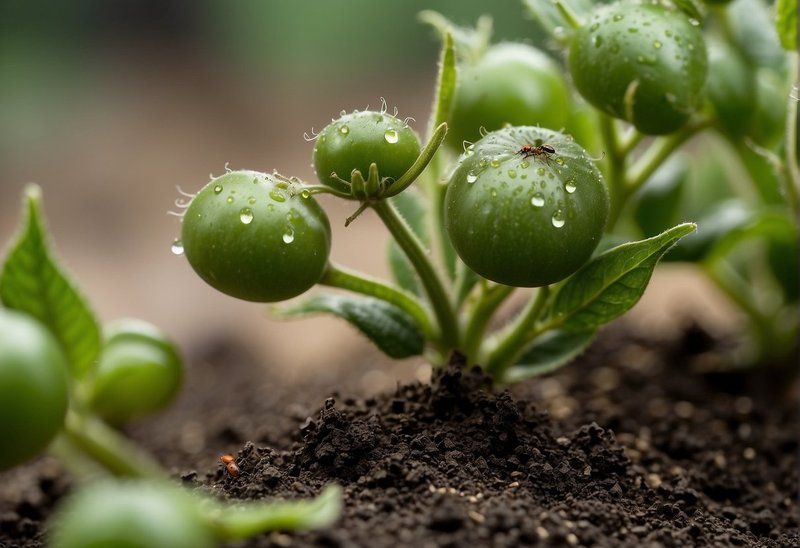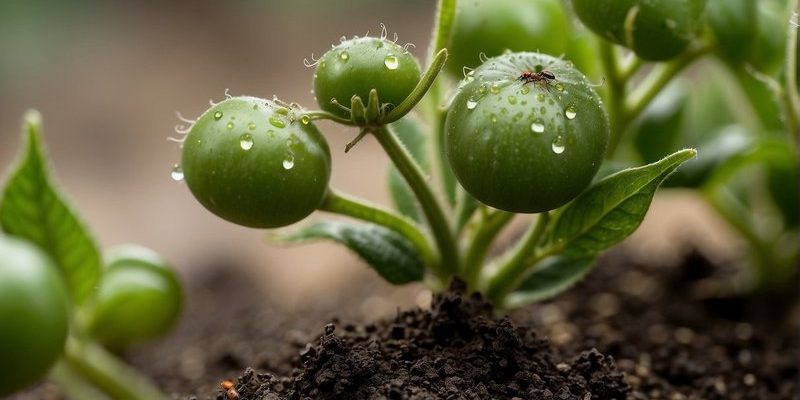
Diatomaceous earth is like a fine powder made from ancient sea creatures called diatoms. When sprinkled in your garden, it acts like tiny glass shards to insects like hornworms, lacerating their exoskeletons, and eventually leading to dehydration. This method is safe for people and pets, making it a favorite among organic gardeners. So, if you’ve been battling hornworms and are looking for a more natural way to protect your plants, stick around. We’re diving deep into how to use diatomaceous earth effectively for hornworm control.
What Are Hornworms?
Hornworms are the caterpillar stage of several moth species, most notably the tomato hornworm and the tobacco hornworm. At first glance, these critters might seem harmless, but don’t let their whimsical appearance fool you. They can grow up to 4 inches long and are experts at camouflaging themselves among the plant leaves. This means they can tend to go unnoticed until they’ve already taken a significant bite out of your beloved plants.
You might be wondering how to identify these little green monsters. Hornworms typically have a distinct horn-like structure on their rear, which gives them their name. Additionally, they have white stripes along their sides that look almost like an artist decided to add some flair. Understanding what hornworms look like is the first step in combatting them.
How Diatomaceous Earth Works
Now, let’s break down how diatomaceous earth works its magic. First, remember that DE is made up of tiny, sharp particles. These particles are harmless to larger creatures, like humans and pets, but for insects, they’re like tiny knives. When a hornworm crawls over the DE, it gets these sharp particles stuck on its body.
Here’s the real kicker: diatomaceous earth doesn’t just sit there waiting for an insect to stumble upon it; it actively absorbs moisture from their outer layer. Once the hornworm’s exoskeleton is compromised, it becomes vulnerable, leading to dehydration and eventually death. It’s a surprisingly effective, yet gentle, way to manage those garden invaders without toxic chemicals.
Choosing the Right Diatomaceous Earth
When it comes to diatomaceous earth, not all products are created equal. You’ll want to ensure you’re using *food-grade* diatomaceous earth, especially if you have pets or plan on growing edible plants. This grade is safe and effective for pest control, while other industrial grades may contain chemicals that are harmful to humans and animals.
Food-grade DE is generally available at garden supply stores or online. Look for products that specify they are safe for gardening. Brands like **Safer Brand** and **Harris** are popular choices and have garnered good reviews from gardeners. Therefore, before making a purchase, do a bit of research or check customer ratings to find the best option for your needs.
Applying Diatomaceous Earth in the Garden
Using diatomaceous earth effectively is all about timing and technique. Here’s how you can apply it in your garden for optimal hornworm control:
1. **Analyze Your Garden:** First, check for any existing hornworms. Look for signs like chewed leaves or the caterpillars themselves.
2. **Choose the Right Time:** It’s best to apply DE during dry weather. Rain can wash it away, making it less effective. Mornings or late afternoons are ideal times, as the sun is less intense.
3. **Sprinkle Evenly:** Use a dusting applicator, or simply your hands (with gloves), to evenly sprinkle a thin layer of DE onto the leaves where you suspect hornworms are hiding. Make sure to dust both the top and bottom of the leaves.
4. **Reapply After Rain:** Remember, DE works best when it’s dry. After rain or heavy watering, check to see if you need to reapply.
By following these simple steps, you can help protect your plants from hornworms, allowing your garden to flourish.
Benefits of Using Diatomaceous Earth
You might be curious about why diatomaceous earth is such a go-to for gardeners. Here are some key benefits:
– **Natural Solution:** DE is a natural product that doesn’t contain pesticides or harmful chemicals, making it safe for the environment, pets, and humans.
– **Versatile Use:** Beyond hornworms, DE can help control other pests, including slugs, beetles, and even fleas in your home. It’s a multi-tasking tool for any gardener!
– **Long-lasting Effects:** Once applied, DE can remain effective for a long time, especially in dry conditions. Just keep it topped up after heavy rainfalls.
– **Soil Benefits:** Interestingly, diatomaceous earth can also improve soil structure and moisture retention, supporting healthier plant growth.
These benefits make diatomaceous earth not just a solution for hornworms, but also a valuable addition to your gardening toolkit.
Alternatives to Diatomaceous Earth
While diatomaceous earth is a powerful ally against hornworms, you might wonder if there are other options available. Here are a few alternatives to consider:
– **Handpicking:** If you have a small garden, you can simply handpick hornworms off your plants. It’s a bit tedious, but effective! Just wear gloves, as some hornworms can be spiny and unpleasant.
– **Neem Oil:** This natural pesticide disrupts the hormonal system of hornworms, making it difficult for them to grow and reproduce. Mix it with water and spray it on the affected plants.
– **Beneficial Insects:** Introducing beneficial insects like parasitic wasps can naturally keep hornworm populations in check. These wasps lay eggs on the hornworms, and when they hatch, they consume the pest from the inside out.
Each of these methods can help manage hornworm problems, but diatomaceous earth remains a reliable, environmentally-friendly solution.
Wrapping Up Your Garden Defense
So, there you have it! Hornworm control with diatomaceous earth can be an easy, effective way to protect your garden. With its sharp, natural properties, diatomaceous earth effectively tackles those green caterpillars while being safe for you and your plants. Remember, the key is consistency and observation. Regularly check your plants and apply DE as needed, especially after rain.
Using diatomaceous earth not only helps in keeping hornworms at bay, but it also has various other benefits for your plants and soil. If you’re looking for a natural way to defend your garden, give it a try! You’ll be happier than a kid in a candy store when you see your plants thriving, untouched by pesky pests. Happy gardening!

